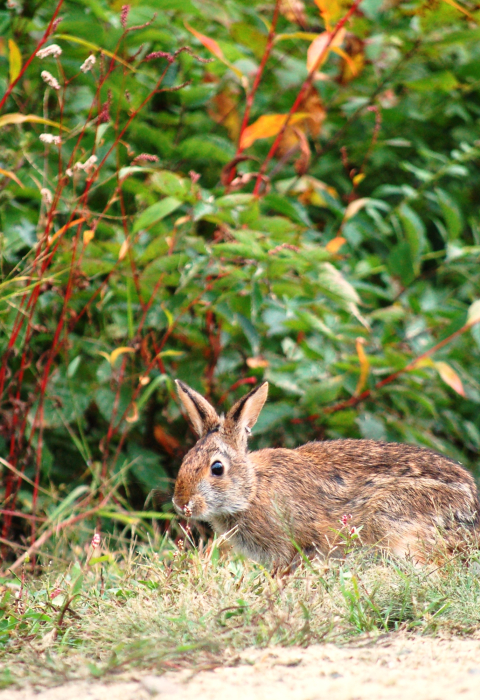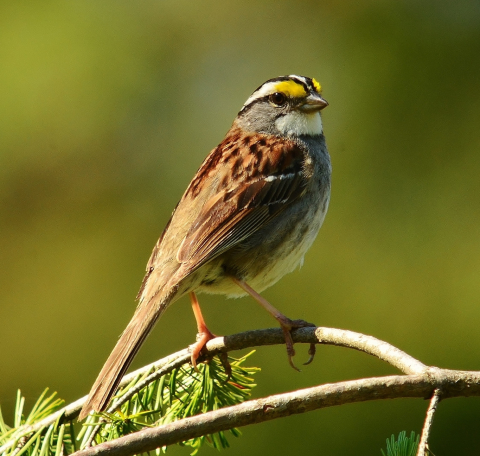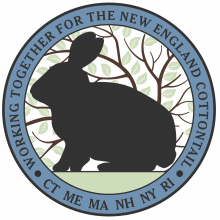National Estuarine Research Reserve Project
Wells Reserve protects 2,250 acres where scientists study natural communities and monitor wildlife in grasslands, thickets, forests, and other habitats.
Several areas are managed intensively to maintain 70 acres of linked young forest and shrubland. Conservationists plant native shrubs, shear overmature shrubs so they grow back more densely, and remove non-native invasive shrubs such as barberry, bittersweet, and honeysuckle.
One animal benefiting from this work is the New England cottontail, the only rabbit native to Maine, considered State Endangered and with a statewide population estimated at fewer than 300. Since 2017, biologists have established a population on Wells Reserve by releasing more than 60 New England cottontails produced through a zoo-based breeding program.
Strong Survival Rates
The rabbits’ survival rates have been good, and they are breeding on the reserve. Most individuals identified through recent surveys have been wild-born. Today, Wells Reserve has one of the largest cottontail populations in Maine.
Among the many young forest birds that share habitat with the rabbits are eastern kingbird, chestnut-sided warbler, American redstart, gray catbird, white-throated sparrow, and brown thrasher.
How to Visit
Seven miles of trails wind through different habitats. Wells Reserve is open daily from 7 a.m to sunset. An admission fee or membership lets visitors use the parking area, visitor center, trails, beach, and other public spaces and facilities.



